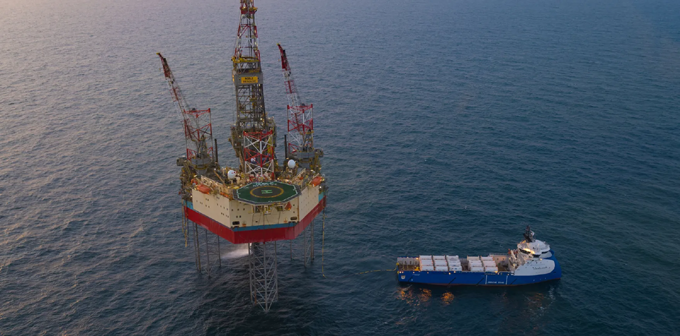
INEOS has selected Svanehøj's deepwell CO₂ cargo pumps for both the onshore storage facility and the first LCO₂ carrier at Project Greensand in the Danish North Sea.
"We have worked closely with INEOS' development team over the past year to specify customized pump solutions for both the onshore terminal and the vessel. It has been a rewarding process, allowing us to leverage our extensive expertise in CO₂ and contribute to an optimized design regarding flow and pressure," said Magnus Madsen, Sales Manager, Cargo Gas, at Svanehøj.
Decades of experience in CO₂ pumps
Svanehøj delivered its first cargo pump solution for an LCO₂ carrier in the 1990s. As one of the few marine pump manufacturers with experience in CO₂ pumping systems, we have identified carbon capture and storage (CCS) as one of our key future growth segments.
The new, strategically significant order from INEOS and Project Greensand further strengthens Svanehøj's position in CCS, reinforcing our proven expertise in CO₂ pumps – a field in which we have added strong references in recent years.
In 2024, we were awarded a contract to supply CO₂ deepwell cargo pumps for the world's two largest LCO₂ carriers, currently under construction at HD Hyundai Mipo. We also provide the CO₂ pumping systems for Northern Lights' LCO₂ fleet in Norway.
400.000 tonnes of CO₂ per year in 2026
Project Greensand will become the EU's first full-scale CO₂ storage facility, transporting captured and liquefied CO₂ from Danish biogas producers offshore for injection into depleted oil wells in the North Sea's Nini Field. Following a successful trial, storage operations are set to begin by late 2025 or early 2026. In the first commercial phase, INEOS aims to store 400.000 tonnes of CO₂ per year with an outlook to scale the capacity to 8 million tonnes a year as volumes of captured CO₂ for storage increase.
INEOS recently entered a long-term agreement with maritime logistics company Royal Wagenborg to construct and deploy the first purpose-built LCO₂ carrier for the Greensand project. The new vessel will be based on the EasyMax concept, developed by Royal Wagenborg and Royal Niestern Sander shipyard. It is an open-top multi-purpose ice-classed vessel design, combining a large load capacity and low fuel consumption. The vessel is expected to be ready for operation by the end of 2025.
The deepwell CO₂ cargo pumps for both the LCO₂ carrier and the onshore facility in Port Esbjerg are scheduled for delivery in Q3 2025.
 KEYFACT Energy
KEYFACT Energy